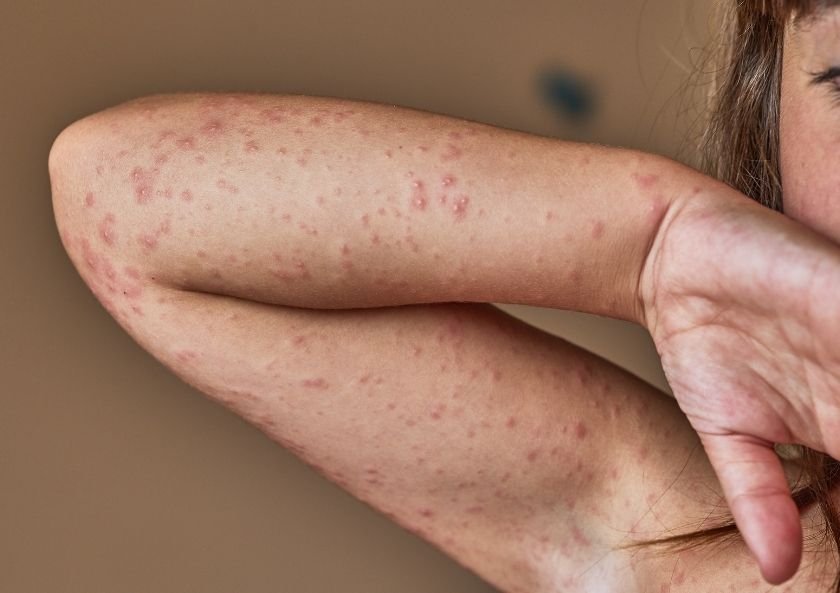The urticaria symptoms can vary from person to person and can occur in different parts of the body. While everything is progressing normally, most of the patients often say that they don’t understand, that they start to complain of itching and redness in the body, sometimes they say that they have itchy, red skin rashes all over their body when they wake up. Skin rashes, which we define as acute urticaria, appear spontaneously and may disappear on their own. We wrote about the symptoms of urticaria in this article.
Some of the patients say that they have itching that they cannot pinpoint, and then typical urticaria lesions appear.
Symptoms of urticaria are sometimes especially noticed by the patient how they occur. It can happen when you exercise, sweat, go out in the sun, in heat or cold. Urticaria can be affected by psychological factors and may occur in intense stress situations.
Urticaria symptoms, in an adult patient; If there is a raised, itchy, red, pale middle skin rash that lasts longer than 24-48 hours, if it occurs spontaneously in one part of the body and then disappears, it is necessary to consider urticaria if it is accompanied by diffuse body itching or swelling on the eyelids and lips.
Causes of Urticaria
There are many factors that can be responsible for urticaria. The most important causes of acute urticaria are; drugs, foods, and infections. Most of the time (80%-90%) the cause is not clear in chronic spontaneous urticaria. In fact, while investigating the causes of urticaria, the most important thing is to take the patient’s history in detail. With a detailed story alone, we are more likely to find the reasons. It is very important to get an appropriate and detailed history from the patients, and the causes that may be responsible for chronic urticaria should be investigated.
Patients are often bothered by itching that they cannot locate in the whole body. Typical urticaria lesions appear after patients complain of itching. The typical lesions we see on the skin in urticaria appear in a short time and then disappear. Urticaria plaques do not stay in the same place for more than 24 hours, lesions may recur during the day. Urticaria plaques can be commonly seen in the form of skin redness or raised lesions on the arms, legs, and the whole body, or they can be a few millimeters in size like a pinhead, sometimes pale and very similar to each other.
Many reasons in the formation of urticaria mainly cause the secretion of chemical substances such as histamine from the allergy cells in the skin. These substances cause the veins to expand in that area, and the fluid (serum) to leak out of the vein, causing them to leak into the intradermal area and cause itching. In addition; the same allergy cells secrete other chemical substances in a later time, such as 5-6 hours. These newly secreted substances also cause the lesions to last longer. As a result, skin redness, itching and swelling occur. These chemicals are eliminated in the body in a short time. Urticaria plaques disappear in one part of the body and appear in another, usually they do not stay in the same place for more than 24 hours.
Since drugs and foods are often among the causes of urticaria, tests can be done about them. Apart from this, many reasons such as allergens, transfusion reactions, infections, insect bites, rheumatic collagen tissue diseases, malignant diseases (tumors), autoimmune diseases can be listed.
When we look at the causes of urticaria, urticarial complaints may occur in the course of many diseases. Among these, conditions such as foods, drugs, common allergens, hormone treatments, environmental factors such as heat, cold, sunlight, water, pressure on the skin, emotional stresses and exercise are more likely to cause hives.



